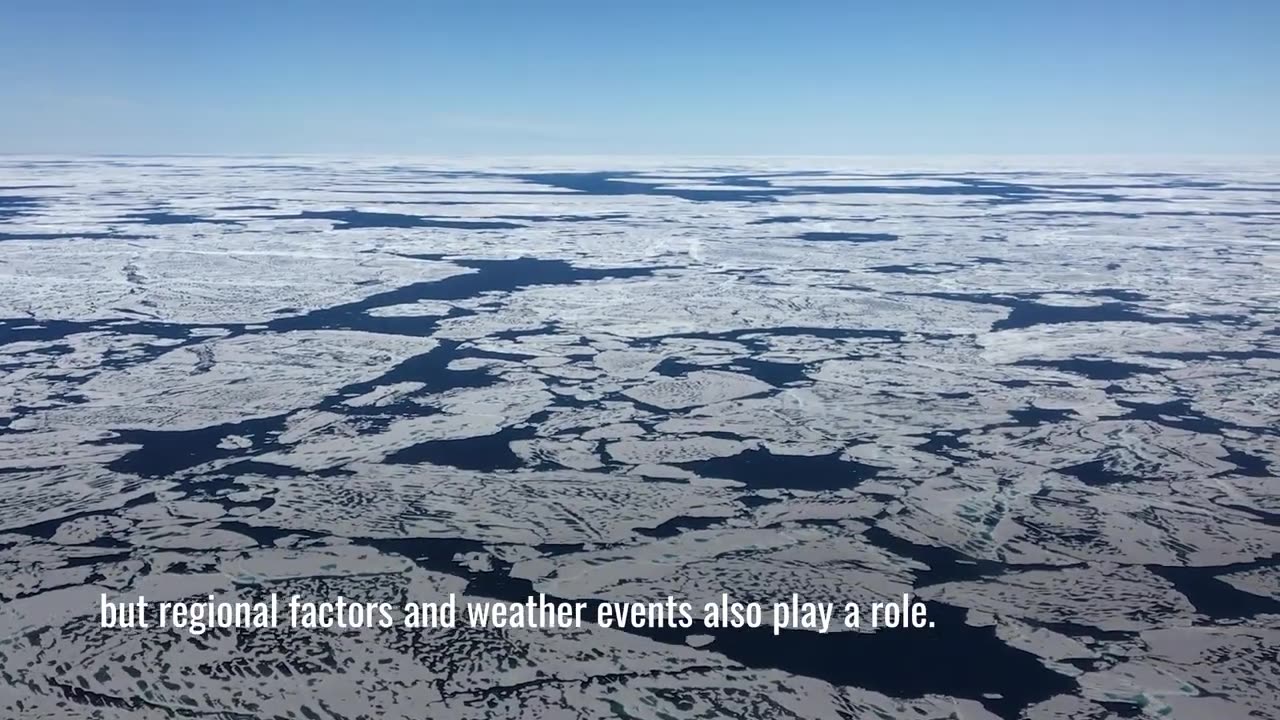Premium Only Content

Arctic Sea Ice Hits 2023 Maximum
On March 6, 2023, the Arctic sea ice pack appeared to reach its maximum extent for this winter, at 14.62 million square kilometers, or 5.64 million square miles, according to the National Snow and Ice Data Center.
Fieldwork and satellites like NASA’s ICESat-2 satellite are monitoring the changing ice pack, and helping to predict how the ice will change in the future.
Sea ice is frozen seawater that floats on the ocean surface. It forms in both the Arctic and the Antarctic in each hemisphere’s winter; it retreats in the summer, but does not completely disappear. This floating ice has a profound influence on the polar environment, influencing ocean circulation, weather, and regional climate.
Since 1979, satellites have provided a consistent continuous record of sea ice. Through 2015, the average monthly September extent of Arctic sea ice has declined by 13.4 percent per decade relative to the average from 1981 to 2010. Declines are occurring in every geographic area, in every month, and every season. Natural variability and rising temperatures linked to global warming appear to have played a role in this decline. The Arctic may be ice-free in summer before the end of this century.On March 6, 2023, the Arctic sea ice pack appeared to reach its maximum extent for this winter, at 14.62 million square kilometers, or 5.64 million square miles, according to the National Snow and Ice Data Center.
Fieldwork and satellites like NASA’s ICESat-2 satellite are monitoring the changing ice pack, and helping to predict how the ice will change in the future.
Sea ice is frozen seawater that floats on the ocean surface. It forms in both the Arctic and the Antarctic in each hemisphere’s winter; it retreats in the summer, but does not completely disappear. This floating ice has a profound influence on the polar environment, influencing ocean circulation, weather, and regional climate.
Since 1979, satellites have provided a consistent continuous record of sea ice. Through 2015, the average monthly September extent of Arctic sea ice has declined by 13.4 percent per decade relative to the average from 1981 to 2010. Declines are occurring in every geographic area, in every month, and every season. Natural variability and rising temperatures linked to global warming appear to have played a role in this decline. The Arctic may be ice-free in summer before the end of this century.
-
 1:08:16
1:08:16
Tactical Advisor
2 hours agoNEW Budget Glocks | Vault Room Live Stream 011
14K1 -
 16:30
16:30
SNEAKO
9 hours agoNO FRIENDS IN THE INDUSTRY.
21.2K14 -
 6:19
6:19
BlackDiamondGunsandGear
20 hours agoHow Fat Guys can Appendix Carry
3.39K2 -
 6:58
6:58
Gun Owners Of America
22 hours ago2024 Was Huge For Gun Rights, Here's Our Top 10 Wins!
8.5K1 -
 15:50
15:50
Degenerate Jay
1 day ago $0.07 earnedJames Bond Is Being Ruined By Amazon? Make Him A Black Gay Woman?
6.52K6 -
 15:18
15:18
DeVory Darkins
23 hours ago $8.26 earnedTrump Drops NIGHTMARE Warning on Joe Biden
23.8K28 -
 36:13
36:13
The Why Files
1 month agoAlien Implants Vol. 1: Devil’s Den UFO Encounter: What Was Found Inside Terry Lovelace?
58.6K38 -
 9:03
9:03
Alabama Arsenal
1 day ago $0.15 earnedAAC HUB 2K | Modern Features, Iconic Classic Looks
3.51K1 -
 13:49
13:49
Dermatologist Dr. Dustin Portela
1 day ago $0.20 earnedDermatologist Reveals the Worst Things To Do To Your Skin
2.75K1 -
 1:02:24
1:02:24
PMG
21 hours ago $0.06 earned"Hannah Faulkner and Jamie Villamor | DEFEND, INSPIRE, INFLUENCE"
2.54K